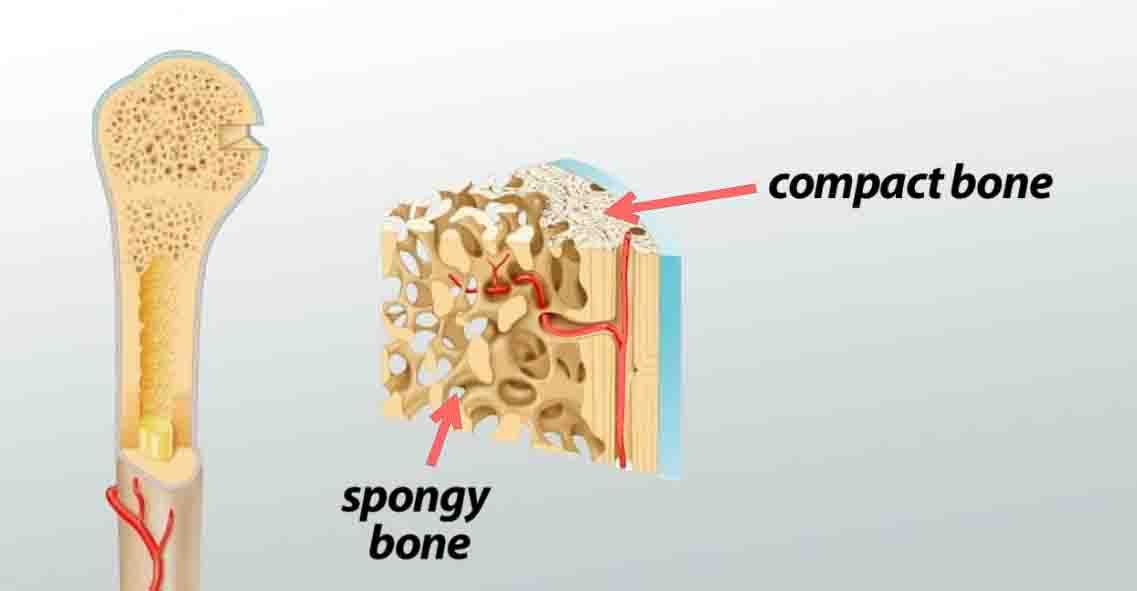Compact Bone Definition
Compact bone, also known as cortical bone, is a denser material used to create much of the hard structure of the skeleton. As seen in the image below, compact bone forms the cortex, or hard outer shell of most bones in the body. The remainder of the bone is formed by cancellous or spongy bone.
Compact bone is formed from a number of osteons, which are circular units of bone material and blood vessels. These units allow compact bone to remain hard and compact while still receiving nutrients from the body and disposing of waste through the same channels. Each osteon is also composed of a number of different cells responsible for the maintenance of the bones, including osteocytes and osteoblasts.
Function of Compact Bone
The compact bone is the main structure in the body for support, protection, and movement. Due to the strong nature of compact bone, compared to spongy bone, it is the preferred tissue for strength. Spongy bone is used for more active functions of the bones, including blood cell production and ion exchange. However, compact bones also serve a function in storing and releasing calcium to the body when needed.
The compact bone also provide strong mechanical levers, against which the muscles can create movement. This function is supported by the joints created by spongy bone and connective tissues, such as tendons and ligaments.
Related Biology Terms
- Cancellous Bone – The softer, less dense tissue that makes up the ends of bones and creates blood cells.
- Osteons – Functional units of compact bone, created by a network of bone cells and blood vessels.
- Osteocyte – A cell which function to maintain and repair bone tissue.
- Osteoblast – Cells which lay down new bone tissue, adding the matrix.

